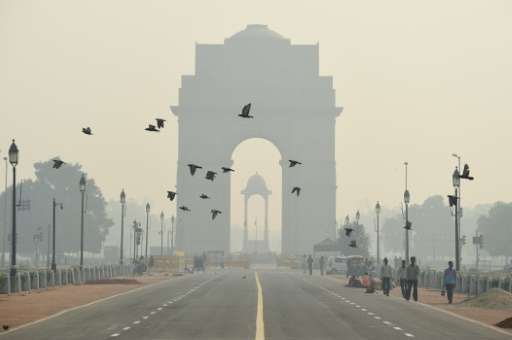SNIPPET
A new study published in Nature Geoscience reveals that the air pollution crisis in New Delhi is caused by burning wood and crops, which produces fumes and airborne particulates. Researchers found that gas molecules produced by burning do not usually clump together to form visible particles, but in colder temperatures, they condense and form visible particles leading to smog. The pollution in New Delhi can exceed 500 micrograms per cubic meter of air. This discovery could help officials take targeted measures to combat air pollution and improve the health of residents.
_______
Delhi is vulnerable to air pollution due to several factors, including its geographical location. The city sits on a flat plain that is surrounded by the Himalayas, which prevents the movement of air. During the summer, the updraft caused by severe heat lifts smog to higher altitudes, where monsoon winds disperse it. However, in the winter, morning mist traps particles at ground level, and colder air flowing off the mountains creates a lid effect, causing smoke and dust to build up and remain suspended in the air.
One of the major contributors to poor air quality is vehicle emissions, with lakhs of poorly tuned vehicles running on low-grade fuel. Additionally, emissions from coal-fired power plants, crematoria, fire-cleared rice paddies, factories, and furnaces burning cheap pet coke and furnace oil, as well as illicit industrial activities in the city, contribute to air pollution.
Scientists may have finally figured it out
A new study published in the journal Nature Geoscience has discovered that the smog-infested air in New Delhi, the capital of India, is caused by burning wood and crops, which produces fumes and airborne particulates. The research was conducted by scientists from the Laboratory for Atmospheric Chemistry at Paul Scherrer Institute and the Indian Institute of Technology Kanpur. The paper explains that the gas molecules produced by burning wood and crops do not usually clump together to form visible particles. However, in New Delhi's colder temperatures at night, the gas molecules condense and form visible particles that lead to smog.
The researchers found that the pollution in New Delhi can exceed 500 micrograms per cubic meter of air, which is much higher than the typical 70 micrograms in Beijing. The study revealed that the chemical processes that occur in the air at night in New Delhi are unique and have not been observed anywhere else in the world, according to Imad El-Haddad, a PSI atmospheric chemist.
Air pollution has been a major issue in New Delhi, with its 20 million residents experiencing health problems as a result. The city has been forced to order school and business closings and dispatch water and anti-smog machines during particularly severe smog episodes.
In summary, the new study has identified that burning wood and crops in New Delhi contributes significantly to the city's air pollution problem. The chemical processes that occur in the air at night in the city are unique and cause gas molecules to condense and form visible particles. This discovery could help officials in New Delhi take more targeted measures to combat air pollution and improve the health of residents.




